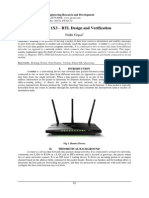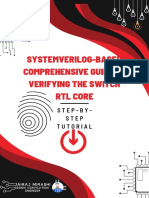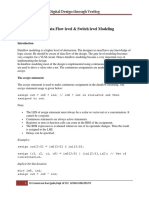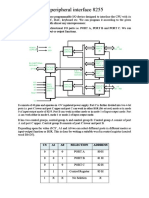0% found this document useful (0 votes)
70 views3 pages1x3 Router Project With Direct Explanation
The project involved designing and verifying a 1x3 router using Verilog HDL and UVM, featuring one 8-bit input port and three output ports that route packets based on destination addresses in the packet header. A UVM-based testbench was created for verification, which included components like a driver, monitor, scoreboard, and sequences for various traffic patterns, while ensuring code and functional coverage. The design was synthesized using industry-standard tools, and potential improvements include adding more output ports and implementing error correction.
Uploaded by
Roshini RoshiniCopyright
© © All Rights Reserved
We take content rights seriously. If you suspect this is your content, claim it here.
Available Formats
Download as DOCX, PDF, TXT or read online on Scribd
0% found this document useful (0 votes)
70 views3 pages1x3 Router Project With Direct Explanation
The project involved designing and verifying a 1x3 router using Verilog HDL and UVM, featuring one 8-bit input port and three output ports that route packets based on destination addresses in the packet header. A UVM-based testbench was created for verification, which included components like a driver, monitor, scoreboard, and sequences for various traffic patterns, while ensuring code and functional coverage. The design was synthesized using industry-standard tools, and potential improvements include adding more output ports and implementing error correction.
Uploaded by
Roshini RoshiniCopyright
© © All Rights Reserved
We take content rights seriously. If you suspect this is your content, claim it here.
Available Formats
Download as DOCX, PDF, TXT or read online on Scribd
/ 3





















































































